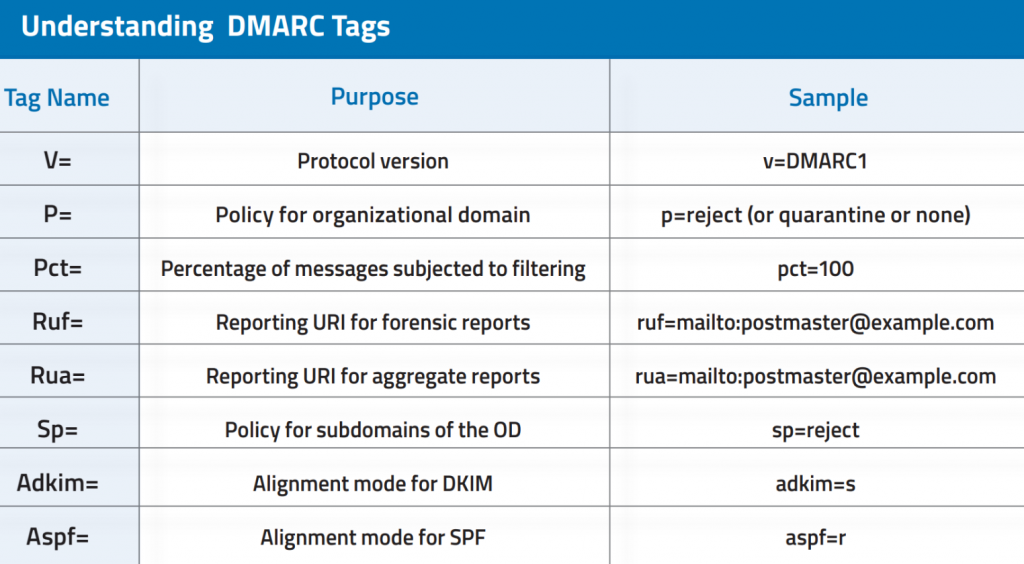What does a DMARC do?
Domain-based Message Authentication, Reporting, and Conformance, or DMARC, is a technical standard that helps protect email senders and recipients from spam, spoofing, and phishing.
Is DMARC a DNS record?
DMARC, which stands for Domain-based Message Authentication, Reporting, and Conformance, is a DNS TXT Record that can be published for a domain to control what happens if a message fails authentication (i.e. the recipient server can’t verify that the message’s sender is who they say they are).
What is DMARC and DKIM?
Domain-based Message Authentication, Reporting, and Conformance (DMARC) and DomainKeys Identified Mail (DKIM) are both security protocols for email. The difference between them, in a nutshell, is that DKIM attempts to verify whether mail is legitimate, and DMARC suggests what to do with mail that isn’t legitimate.
What is DMARC in email security?
Domain-based Message Authentication Reporting and Conformance (DMARC): An email validation system that detects and prevents email spoofing. It helps combat certain techniques often used in phishing and email spam, such as emails with forged sender addresses that appear to come from legitimate organizations.
With DMARC or Without DMARC
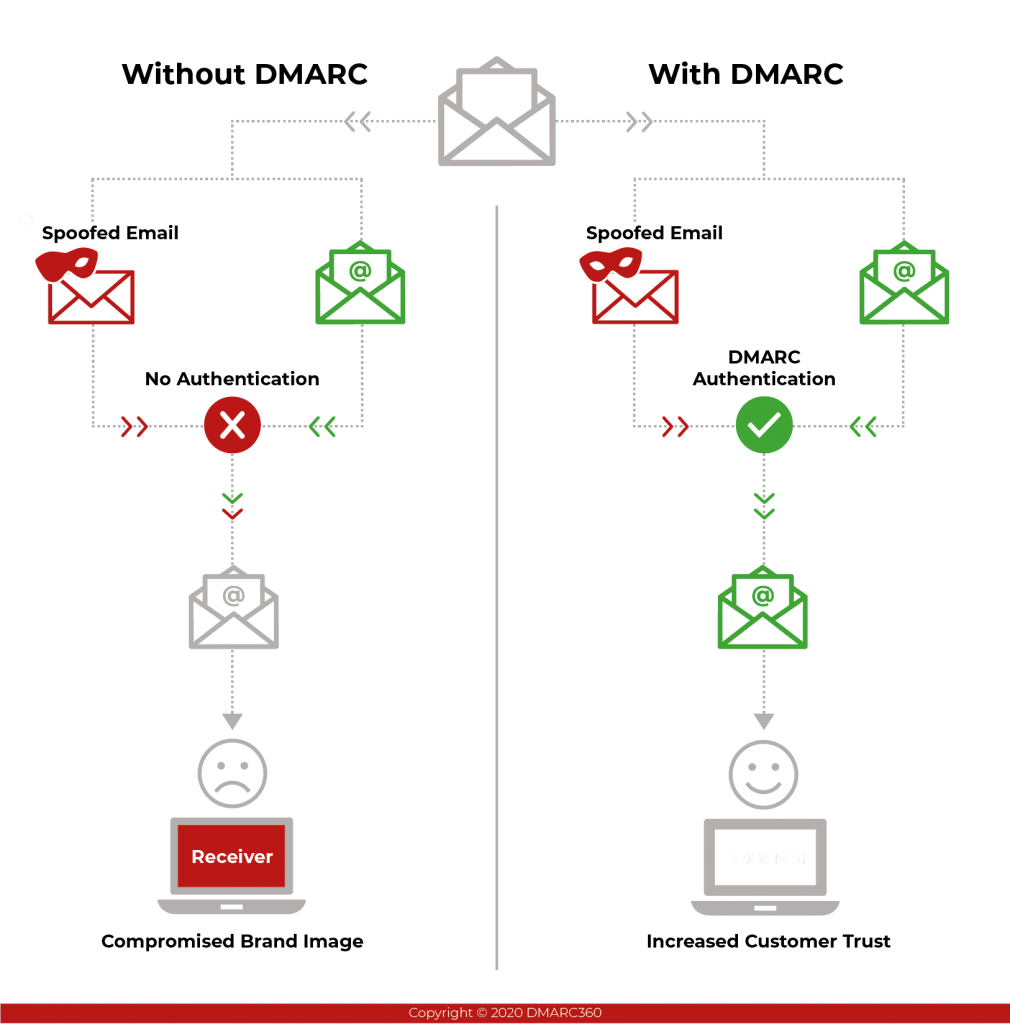
How DMARC Works?
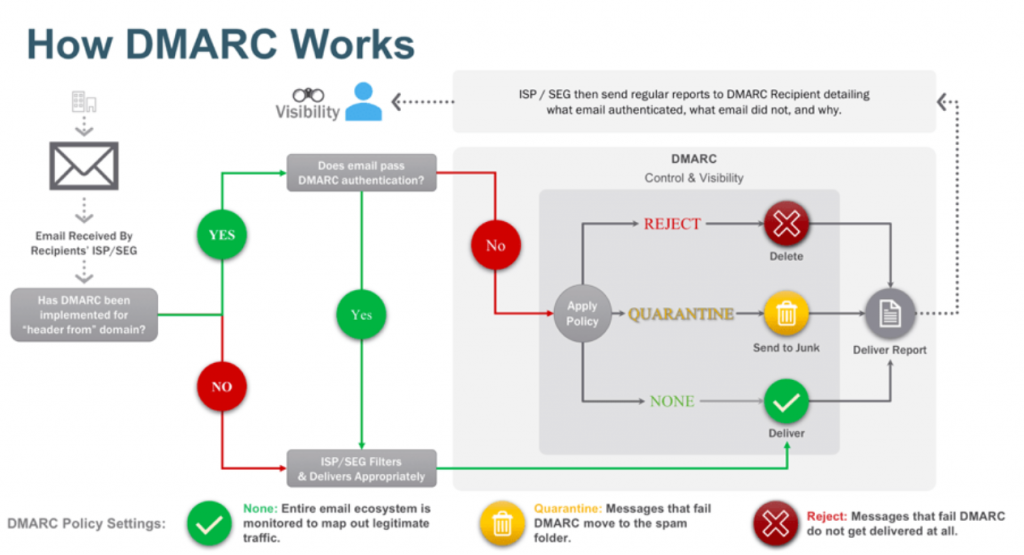
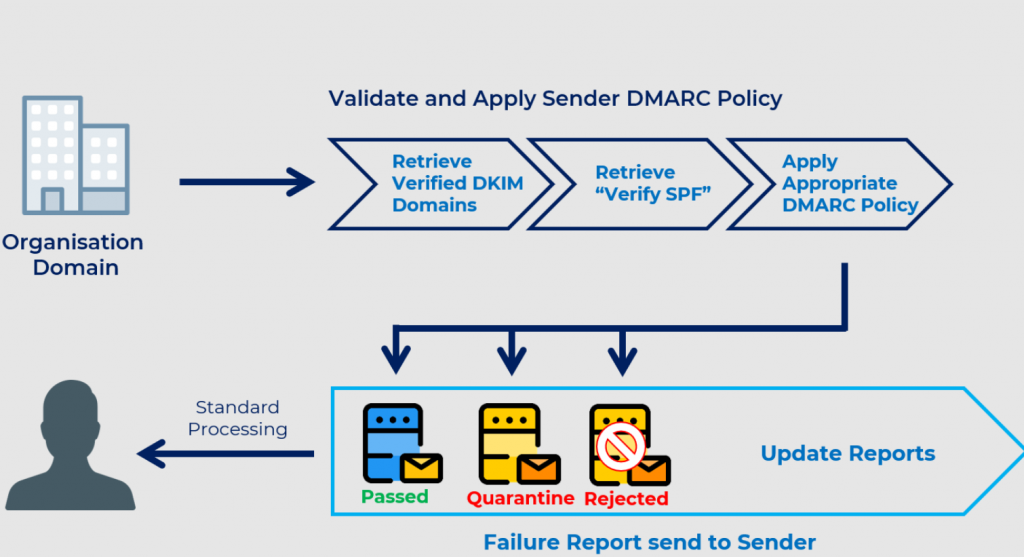
DMARC Policy

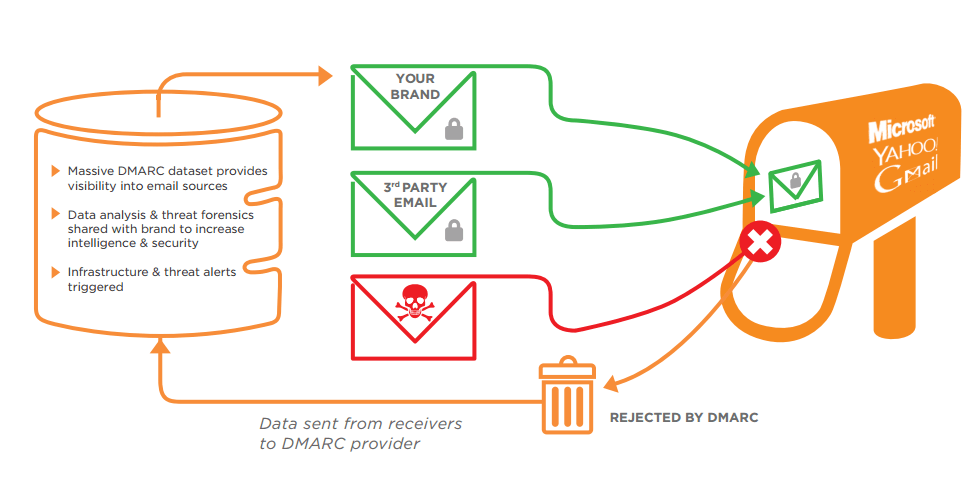
What is DMARC and do I need it?
Domain-based Message Authentication Reporting and Conformance (DMARC) is a free and open technical specification that is used to authenticate an email by aligning SPF and DKIM mechanisms. By having DMARC in place, domain owners large and small can fight business email compromise, phishing and spoofing.
Is DMARC a vulnerability?
While DMARC isn’t a website vulnerability or ‘bug’, having no DMARC record (or a record at none/quarantine) means you’re extremely vulnerable to impersonation and phishing attacks, such as BEC. To secure your business email, it is critical for SPF, DKIM and DMARC to be configured correctly.
DMARC Benefits
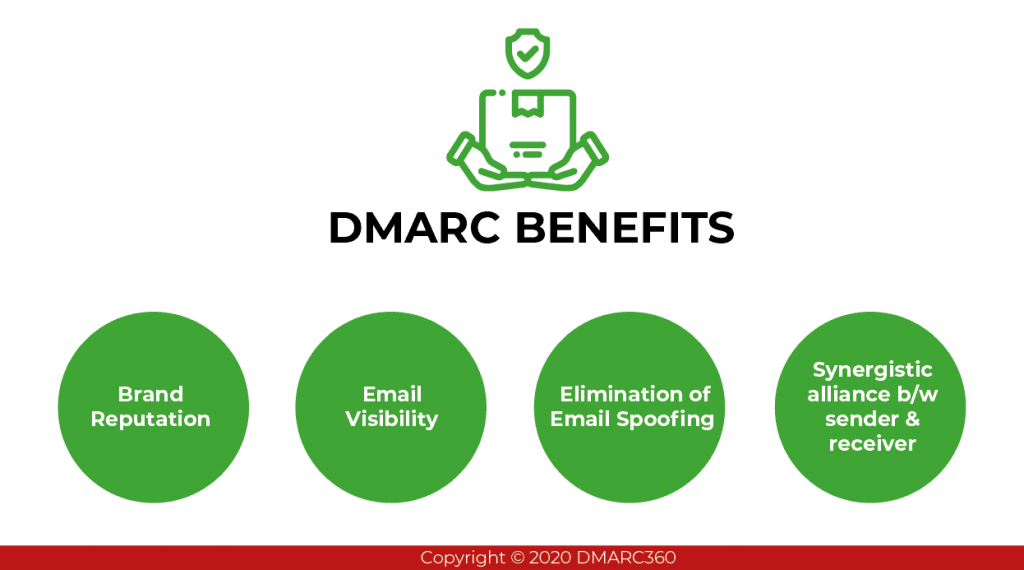
Is DMARC only for email?
Domain-based Message Authentication, Reporting and Conformance (DMARC) is an email authentication protocol. It is designed to give email domain owners the ability to protect their domain from unauthorized use, commonly known as email spoofing.
Is DMARC better than DKIM?
DMARC is the best method for protecting your brand from phishing scams, but it’s not as effective at stopping spam as DKIM or SPF. DKIM is better than DMARC for preventing spam, but it’s not as good at stopping phishing scams.
Do I need DMARC if I have DKIM?
So, if you want to implement a DMARC record, you have to set SPF and DKIM records first. DKIM does not require DMARC. However, using DKIM with DMARC helps to keep false negatives in DMARC. DMARC suggests what to do with mail that isn’t legitimate, while DKIM tries to verify whether mail is legitimate or not.
Do you need DKIM to use DMARC?
Does DMARC require DKIM? No. DKIM is not required by DMARC. However, setting up DKIM keeps false negatives in DMARC authentication at the minimum.
Does Gmail use DMARC?
There are three Gmail DMARC policy options: None: Deliver the message normally. Quarantine: Send the message to the recipient’s spam folder or to quarantine, if a quarantine option is configured. Reject: Do not deliver the message.
Should I reject DMARC?
A DMARC “p=reject” policy will allow you to ensure that all malicious email is stopped. As an added bonus, the recipient of the intended malicious email will never become aware of the email in the first place, as it will never get sent to a spam or quarantine folder.
Does DMARC cost money?
DMARC is a free and easy way to protect your domain from email spoofing. It’s also a great way to improve your deliverability and protect your reputation.
Why don t companies use DMARC?
The specs are tricky and tedious for most companies to implement. DMARC poses a particular challenge for small and midsize companies, who do not have the IT resources or depth of messaging experience to learn about the trio of standards it comprises and ensure that they are implemented correctly.
What happens if you don’t have a DMARC record?
When you see “No DMARC record found” or “DMARC record not found” or “DMARC record is missing” that means your domain misses the most effective and powerful email authentication mechanism such as DMARC. A domain without a DMARC reject policy is not nice, sort of like being naked in the middle of the street.
What happens if an email fails DMARC?
This error means that the message failed authentication tests and is not DMARC Compliant. A DMARC Compliance failure means that both SPF & DKIM verification tests failed. These failures can negatively impact email delivery as inboxes cannot verify the legitimacy of your email.
Can DMARC block emails?
DMARC takes it a step further and gives you full control to set a policy to reject or quarantine emails from sources you do not know or trust, all based on the results of DKIM and SPF.
Error
Action Recommended: It doesn’t look like DMARC has been set up on your domain (devopsschool.com). We recommend using the DMARC protocol because it helps protect your domain from unauthorized use. Please check out our step-by-step guide for details on how to add this record to your domain’s DNS.
Amazon SES
Domain verification in Amazon SES is now based on DomainKeys Identified Mail (DKIM), an email authentication standard that receiving mail servers use to validate an email’s authenticity. Configuring DKIM in your domain’s DNS settings confirms to SES that you’re the identity owner, eliminating the need for TXT records. Domain identities that were verified using TXT records do not need to be reverified; however, we still recommend enabling DKIM signatures to enhance the deliverability of your mail with DKIM-compliant email providers.
Understanding DMARC Tags
